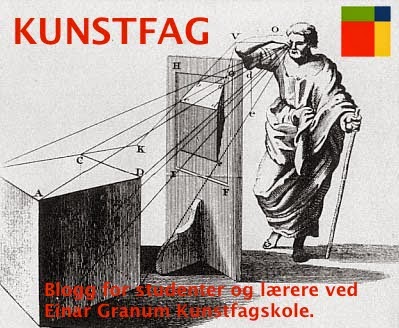This is the final peer-graded assignment in a MOOC - Learning to Teach Online by University of New South Wales, Australia.
Hello, and thanks for looking into my submission!
The task was to design and describe the online component for your own class that you identified earlier in the course. Building on my experience with teaching Interaction of Color on iPad on Einar Granum Vocational Artschool in Oslo, Norway I developed an online course using the application developed by Yale University press in 2013.
Assignment Questions
Drawing upon the concepts explored in the course, the case studies presented, resources, activities, and discussions include responses to the following in this final culminating assessment:
Hello, and thanks for looking into my submission!
The task was to design and describe the online component for your own class that you identified earlier in the course. Building on my experience with teaching Interaction of Color on iPad on Einar Granum Vocational Artschool in Oslo, Norway I developed an online course using the application developed by Yale University press in 2013.
Assignment Questions
Drawing upon the concepts explored in the course, the case studies presented, resources, activities, and discussions include responses to the following in this final culminating assessment:
- A description of the online activity, assessment or resource including specifics about what the students and the teacher would have to do.
- A description of how the online activity, assessment, or resource is aligned with the rest of the curriculum in your course.
- Discuss of strategies you have chose to engage your students with the online the online teaching.
- Make a plan for evaluating your online assessment, activity, or resource to determine its effectiveness.
This is nothing that I´m especially proud of; poor video and bad english. These facts shall not reflect the potential I believe one can find in new technology and online teaching. Please look at this assignment as a trail with a lot of errors and please do not feel obliged to listen to the bitter end!
Sincerely Rustan
Transcript: Peer-graded Assigment 2:
Design an online Learning Componment (4)
A plan for evaluating your online assessment….
The most important thing when evaluating teaching
is to remember the goals one wants to achieve. The goals for this course in
Interaction of Color are threefold. First of all, a high participation is
imperative since this is essentially a practical course. Only by solving the
exercises is it possible to be experience the core of what the course is al
about. Secondly the students shall learn to use adequate terminology to
describe different qualities in colour both scientifically and aesthetically.
And the final goal is to develop the student's ability to perceive shades,
nuances in colour and it´s relativity. It is important that the students understand
this progression from the start.
And to achieve this, it is important to follow
and evaluate the activity immediately, and to monitor to what extent students
interact with each other's work. It may be a good idea that the some exercises
have obligatory comment of at least 3 peers. When following uploads of the
various exercises in the OER, it's important that everyone publishes and gives
feedback. If someone falls outside, it is important to contact him or her and
clarify why they did not participate and offer support. In short, initially
what you need is a quantitative collection of data, how far, how much and how
often, to ensure a great activity. Besides visiting the group first hand the
various OER offer statistics that measure the activity on the given page. There
you can follow the activity on the page, the number of visits, something that
can be an interesting tool. Furthermore, it is important that you evaluate how
the students interact with the course content, how many exercises they do and
to what extent they have understood the task in hand. This can only be done by
looking at the students' work and highlighting some of the most striking
results presented. The first task simply
expressed is to get 3 colours to look like 4. Here the learning is to
experience how some colours are more likely to change than others and more
precisely how colour and value determine to what degree one will succeed. It is
also important that they read the course literature so that they understand the
terms used to describe the different qualities in colour. This can be evaluated
by following the commentaries.
The course ends with a joint review where each student present a
striking result from the course uploaded to our school LMS together with
reflextion notes.
